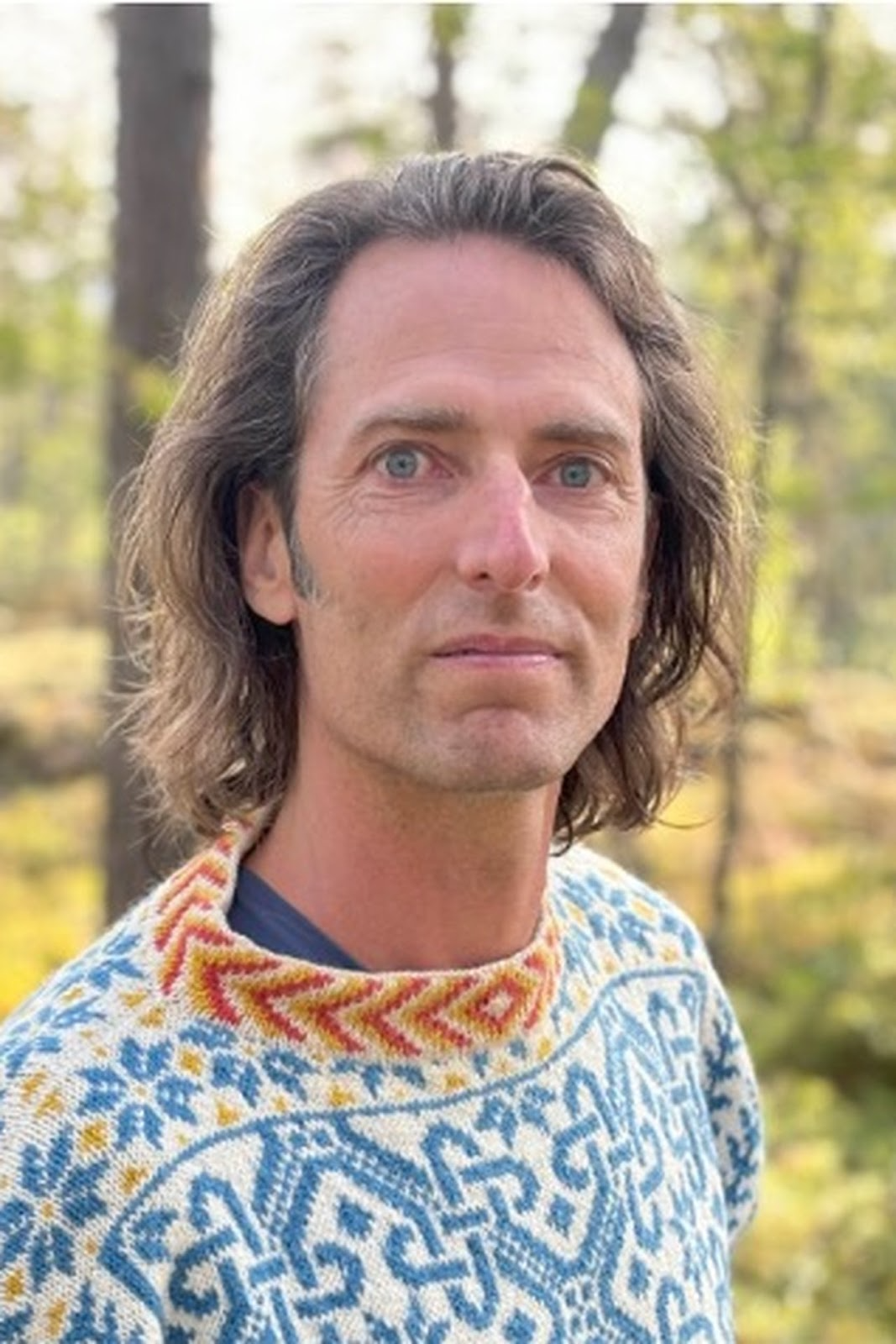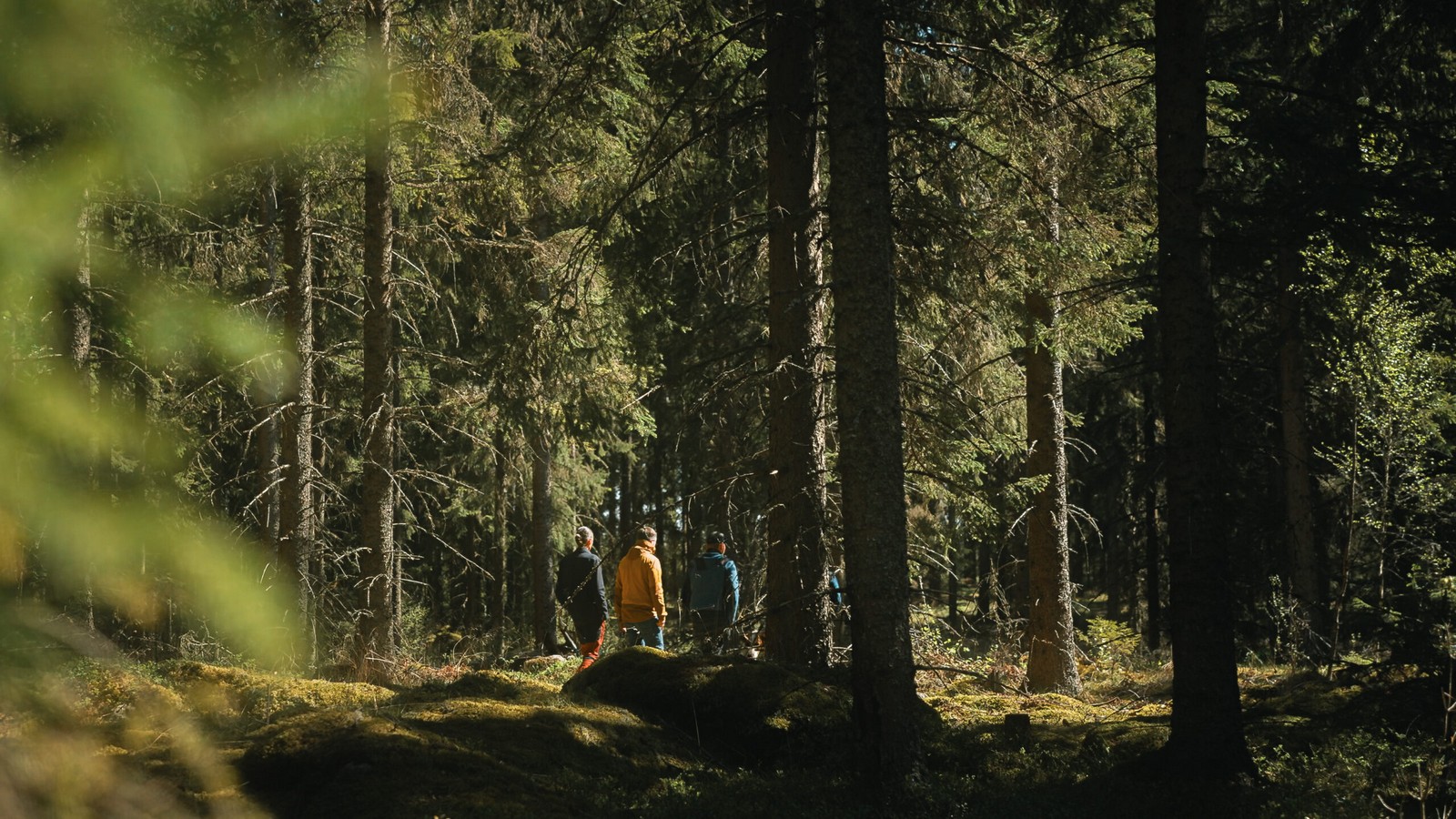Plockhugget: Clear-cut free timber for climate-friendly building
Imagine walking through a forest where birdsong fills the air, sunlight filters through tall trees, and chanterelles hide under moss. Now imagine knowing that the wood holding up your home, your school, or your office came from that same forest and that it’s still standing.

That’s what Plockhugget, a startup in the Minc Incubator, makes possible. They’re changing how we use timber: taking only selected trees instead of clear-cutting whole landscapes. As a result, we get the wood that builds our cities, while the forest keeps growing, storing carbon, and sheltering life.
It’s a simple idea with massive impact. Clear-cutting is one of Sweden’s biggest climate challenges — releasing carbon on the same scale as the entire industrial sector. Plockhugget shows there’s another way: forests can stay forests, and still provide the materials we need.
This is timber with a story. Timber from forests that remain forests.
And Plockhugget is already proving what’s possible. Their timber has now for the first time been used for the climate balance a large office building, nine-storeys high. They’ve built a certification system, launched partnerships, and just recently celebrated Malmö’s decision to require closer-to-nature timber for all new public buildings.
To learn more, we sat down with co-owner Johan Berhin, who explains why closer-to-nature forestry, without clear-cuts, might be one of the most powerful tools we have for the climate, for biodiversity, and for the future.

What was the original idea behind Plockhugget – how did the journey begin?
Two Swedish forestry pioneers had seen how well their forests performed when following clear-cut free principles. Diversity, resilience and productivity combined. They decided to form a company, set up a Swedish standard, and offer the timber to the construction industry, making it possible to build wooden houses without cutting down whole forests.
For someone who has never heard about it – what does “hyggesfritt” or “clear-cut free” forestry actually mean in practice?
Clear-cut free means that forests are selectively harvested, choosing only the biggest trees individually and in small groups, leaving the vast majority. This gives a continuous forest where plants, fungi and animals can thrive over time.
Habitat Masthuggskajen by NCC Properties is the first office building that uses certificates from continuous cover forestry for the climate balance – what does this milestone mean for you?
That we could supply certificates for this nine stories high wooden building, for all its 2000 m3 of sawn timber, shows that the necessary community and structure has been built up and is ready to deliver - climate neutrality on a large scale. That is a very important signal to the market, and a very proud milestone for us!
What were the biggest challenges in supplying clear-cut free timber on such a large scale for Habitat?
There is a large interest among forest owners, but still it is a step to take to change how you have done things for generations. We have set up a revenue-sharing system with forest owners that deliver without clear-cutting. With this we can reach very large volumes. I think the biggest challenge was to spread the information that we can supply these quantities.
How would you describe the difference between being inside a building made of “hyggesfritt” timber compared to a traditional one?
A wooden house has another feeling, another acoustic and a natural touch. With the “hyggesfritt” you also add a traceable link back to the continuous forest that gave the timber: a diverse, thriving and positive place to connect with, as a “friend forest” for the building that the tenants can visit. And maybe pick some chantarelles.
You mention that the timber is used as climate balance – can you explain how that system works in practice?
When buildings are certified as NollCO2 (climate neutral), there is a system for counting the climate benefit of clear-cut free wood. Clear-cut free certificates are then bought to match the timber used in the building. This ensures that the same amount of clear-cut free timber has been delivered to the market — a mass balance system similar to how you buy fossil-free energy.
In what ways does closer-to-nature forestry contribute to both climate benefits and biodiversity gains?
When a forest is clear-cut it loses most of its ability to store carbon, while the soil continues emitting greenhouse gases. In Sweden, these emissions are on the same scale as all industrial emissions combined. With closer-to-nature forestry, there is continuous storage of carbon in both soil and trees. Diversity also thrives. Different trees bring their “friends” in the form of plants, fungi, insects, birds, and animals.
How do you see closer-to-nature timber in relation to other climate-smart materials, such as climate-neutral concrete or fossil-free steel?
Closer to nature timber could stand alongside climate-neutral concrete and fossil-free steel as disruptive steps toward climate neutrality. But unlike concrete and steel, timber is already available, cost-effective, and contributes to biodiversity.
What are the biggest barriers for more projects to choose closer-to-nature timber? Is it cost, logistics, or awareness?
Awareness. Few people know the huge difference in environmental performance. Some think the cost difference must be high — but in reality the additional cost is around 10%, and falling. Others worry about availability, but we can now deliver on a large scale.
How much interest are you seeing among property developers, architects, and investors for this type of timber solution?
There is strong interest and eagerness to contribute to change. Now backed up by the first large projects. With more awareness of the cost/environmental performance ratio, this will boom.
Do you believe we’ll see more projects like Habitat in the next five years – and if so, where?
Oh yes. In five years, most if not every large wooden building will demand clear-cut free timber; to stand proud in the eyes of tenants, investors, and the public.
You’ve said Habitat Masthuggskajen creates a sense of “connection to the forest” – why is that emotional link to nature important in buildings?
Natural materials and greenery create well-being. A wooden office like Habitat Masthuggskajen offers a healthier environment, underlined by a connection to the continuous forest that provided the timber, a thriving “friend forest” where tenants might go and pick chanterelles.
How do visitors react when they learn the building is entirely made from closer-to-nature timber?
Respect. “Wow, how good! I didn’t know this was possible!”
What’s the next step for Plockhugget after Habitat – which projects or ideas are you most eager to realize?
We see how closer-to-nature forestry can become the norm, and how that will change nature and climate for the better. In Sweden, the Nordics, and beyond. The impact will not go unnoticed!
We heard you have very exciting news to share – what is that?
The City of Malmö just introduced a demand for closer-to-nature timber in all new public buildings: schools, preschools, elder care, culture and sports facilities. This is a breaking point, and we believe many other cities will follow.
_____________________________________________________________________________________
Plockhugget’s story shows what’s possible when science, business, and deep care for nature meet. They’ve already proven that clear-cut free timber can supply major projects and now, with Malmö setting a precedent, a whole new standard is on the horizon.
A future where our buildings connect us back to thriving forests is already happening!
At Minc, we’re proud to host companies like Plockhugget that combine innovation with impact. Because the way we build today will shape the forests, cities, and climate of tomorrow.
About Minc
At Minc, we believe in creating something bigger than yourself. We offer everything an entrepreneur needs to go from concept to market in-house. Our international network of advisors and award-winning programs will help your startup scale faster and smarter. Welcome to the startup house of Malmö.
Related Posts
.jpg)
Mincs investeringsstruktur gör sin bästa exit hittills
FTC2 firar sin största exit hittills genom uppköpet av HR-techbolaget Eletive.
Learn more
Plockhugget: Clear-cut free timber for climate-friendly building
Imagine knowing that the wood holding up your home, your school, or your office came from that same forest and that it’s still standing. That’s what Plockhugget, a startup in the Minc Incubator, makes possible.
Learn more
The human side of IT - meet Steve Zimmerman of ShepherdTech
A Delaware native now living in Malmö, he leads ShepherdTech, a sharp team building modern, self-service IT for SMEs and scale-ups.
Learn more